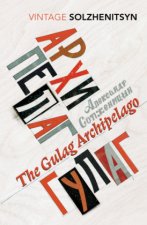Kod: 04088573
Iconography of Power
Autor Victoria E Bonnell
Masters at visual propaganda, the Bolsheviks produced thousands of vivid and compelling posters after they seized power in October 1917. Intended for a semi-literate population that was accustomed to the rich visual legacy of the ... więcej
- Język:
 Angielski
Angielski - Oprawa: Miękka
- Liczba stron: 385
Wydawca: University of California Press, 1999
- Więcej informacji o książce

Zobacz książki o podobnej tematyce
-

Subliminal
64.44 zł -15 % -

(Honest) Truth About Dishonesty
42.56 zł -23 % -

Upside of Irrationality
51.69 zł -23 % -

Subliminal
51.69 zł -23 % -

(Honest) Truth About Dishonesty
56.61 zł -

Oxford Reading Tree: Level 2: Patterned Stories: A Sinking Feeling
27.50 zł -23 %
Powiadomienie o dostępności
Wpisz swój adres e-mail, aby otrzymać od nas powiadomienie,
gdy książka będzie dostępna. Proste, prawda?
Więcej informacji o Iconography of Power
 Opis
Opis
Masters at visual propaganda, the Bolsheviks produced thousands of vivid and compelling posters after they seized power in October 1917. Intended for a semi-literate population that was accustomed to the rich visual legacy of the Russian autocracy and the Orthodox Church, political posters came to occupy a central place in the regime's effort to imprint itself on the hearts and minds of the people and to remold them into the new Soviet women and men. In this first sociological study of Soviet political posters, Victoria Bonnell analyzes the shifts that took place in the images, messages, styles, and functions of political art from 1917 to 1953. Everyone who lived in Russia after the October revolution had some familiarity with stock images of the male worker, the great communist leaders, the collective farm woman, the capitalist, and others. These were the new icons' standardized images that depicted Bolshevik heroes and their adversaries in accordance with a fixed pattern. Like other 'invented traditions' of the modern age, iconographic images in propaganda art were relentlessly repeated, bringing together Bolshevik ideology and traditional mythologies of pre-Revolutionary Russia. Symbols and emblems featured in Soviet posters of the Civil War and the 1920s gave visual meaning to the Bolshevik worldview dominated by the concept of class. Beginning in the 1930s, visual propaganda became more prescriptive, providing models for the appearance, demeanor, and conduct of the new social types, both positive and negative. Political art also conveyed important messages about the sacred center of the regime which evolved during the 1930s from the celebration of the heroic proletariat to the deification of Stalin. Treating propaganda images as part of a particular visual language, Bonnell shows how people 'read' them - relying on their habits of seeing and interpreting folk, religious, commercial, and political art (both before and after 1917) as well as the fine art traditions of Russia and the West. Drawing on monumental sculpture and holiday displays as well as posters, the study traces the way Soviet propaganda art shaped the mentality of the Russian people (the legacy is present even today) and was itself shaped by popular attitudes and assumptions. "Iconography of Power" includes posters dating from the final decades of the old regime to the death of Stalin, located by the author in Russian, American, and English libraries and archives. One hundred exceptionally striking posters are reproduced in the book, many of them never before published. Bonnell places these posters in a historical context and provides a provocative account of the evolution of the visual discourse on power in Soviet Russia.
 Szczegóły książki
Szczegóły książki
Kategoria Książki po angielsku Society & social sciences Politics & government Political control & freedoms
- Pełny tytuł: Iconography of Power
- Autor: Victoria E Bonnell
- Język:
 Angielski
Angielski - Oprawa: Miękka
- Liczba stron: 385
- EAN: 9780520221536
- ISBN: 0520221532
- ID: 04088573
- Wydawca: University of California Press
- Waga: 780 g
- Wymiary: 235 × 156 × 22 mm
- Data wydania: 29. September 1999
Ulubione w innej kategorii
-

The Gulag Archipelago
70.16 zł -23 % -

On Palestine
73.18 zł -5 % -

Propaganda
65.35 zł -4 % -

Gift of Love
47.18 zł -23 % -

In Order To Live
51.69 zł -23 % -

Manufacturing Consent
60.93 zł -23 % -

Understanding Power
64.44 zł -37 % -

Anatomy of the State
65.35 zł -4 % -

Long Walk To Freedom
69.96 zł -14 % -

Half the Sky
62.74 zł -15 % -

On Liberty
47.18 zł -23 % -

Red Horizons
85.32 zł -5 % -

How Propaganda Works
103.19 zł -

Creating Capabilities
101.79 zł -

I Have a Dream
73.38 zł -5 % -

Fear No Evil
85.22 zł -4 % -

In Harm's Way
291.53 zł -

Handbook of Tyranny
159.11 zł -5 % -

Zinnophobia
153.59 zł -14 % -

Nothing To Envy
43.26 zł -15 % -

The Gulag Archipelago, 1918-1956
96.17 zł -10 % -

The Gulag Archipelago, 1918-1956
99.88 zł -11 % -

Human Rights: A Very Short Introduction
42.56 zł -23 % -

Inventing Human Rights
80.71 zł -7 % -

New Jim Crow
51.69 zł -23 % -

Political Philosophy: A Very Short Introduction
42.56 zł -23 % -

Cultural Cold War
101.29 zł -4 % -

Commissar Vanishes
116.65 zł -

Rights of Man
33.52 zł -23 % -

Anatomy of the State
33.82 zł -

Constructing Cassandra
198.67 zł -

Gulag Archipelago
79.20 zł -23 % -

International Law: A Very Short Introduction
43.26 zł -15 % -

Anarcho-Fascism
79 zł -

The Net Delusion
51.69 zł -23 % -

Orwell on Truth
69.96 zł -14 % -

Uncreative Writing
101.09 zł -5 % -

Soul of America
125.18 zł -4 % -

Parkland: Birth of a Movement
79.20 zł -23 % -

Satow's Diplomatic Practice
443.43 zł -

Universal Human Rights in Theory and Practice
177.59 zł -

Legitimacy of International Human Rights Regimes
186.12 zł -

Art of Revolt
97.47 zł -5 % -

Domination and the Arts of Resistance
105 zł -4 % -

Desert and the Sea
51.69 zł -23 % -

Witness for the Defense
93.76 zł -5 % -

Sociology of Human Rights
138.53 zł -

Terrorism, Rights and the Rule of Law
269.45 zł -

Suffragettes
15.25 zł -23 %
zadowolonych klientów
Od roku 2008 obsłużyliśmy wielu miłośników książek, ale dla nas każdy był tym wyjątkowym.
Copyright! ©2008-24 libristo.pl Wszelkie prawa zastrzeżonePrywatnieCookies



 21 milionów książek
21 milionów książek Dostawa 10.99 zł
Dostawa 10.99 zł (32) 444 93 66 (8-15.30h)
(32) 444 93 66 (8-15.30h)